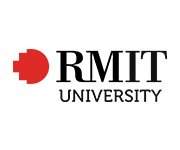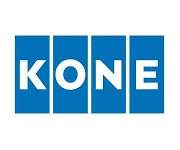The Vital Need for an Asset Management System in Facility Management
In today's complex and dynamic business environment, effective facility management software is essential for ensuring the smooth operation of assets and infrastructure. As a facility manager, it's crucial to recognise the importance of implementing an asset management system to record condition assessments and manage the lifecycle of assets efficiently. In this essay, I will delve into the key reasons why such a system is indispensable for effective facility management.
First and foremost, an asset management system provides a centralised repository for recording and organising vital information about assets. This includes detailed descriptions, maintenance history, warranty information, and condition assessments. By having all this data in one accessible location, facility managers can make informed decisions about maintenance schedules, repairs, and replacements. This centralised approach eliminates the need for manual record-keeping and reduces the risk of errors or omissions.
Furthermore, a robust asset management system facilitates comprehensive condition assessments of assets. By regularly assessing the condition of assets, facility managers can identify potential issues early on and take proactive measures to address them. This proactive approach helps to prevent unexpected breakdowns or failures, thereby minimising disruptions to operations and reducing maintenance costs in the long run. Additionally, condition assessments enable facility managers to prioritise maintenance activities based on the criticality and condition of assets, ensuring optimal resource allocation.
Moreover, an asset management system supports lifecycle management by providing insights into the lifecycle stages of assets, from acquisition to disposal. By tracking the lifecycle of assets, facility managers can optimise asset performance, maximise their useful life, and plan for timely replacements or upgrades. This proactive lifecycle management approach helps to avoid costly reactive replacements and ensures that assets are replaced or upgraded at the most opportune time, based on factors such as performance deterioration, technological advancements, and changing business needs.
Another key benefit of an asset management system is its ability to facilitate compliance with regulatory requirements and industry standards. Many industries are subject to stringent regulations regarding the maintenance and safety of assets. By documenting maintenance activities and ensuring compliance with regulatory requirements, facility managers can mitigate legal risks and avoid penalties or fines. Additionally, adherence to industry standards ensures that assets are maintained at optimal levels, enhancing operational efficiency and safety. Furthermore, an asset management system enhances collaboration and communication among stakeholders involved in asset management processes. By providing access to real-time data and insights, the system enables effective communication between facility managers, maintenance teams, vendors, and other relevant parties. This collaboration streamlines decision-making processes, fosters accountability, and promotes a culture of transparency and accountability. Moreover, by sharing information and insights, stakeholders can collectively work towards common goals, such as improving asset performance and reducing downtime.
In addition to operational benefits, an asset management system also delivers financial advantages to organisations. By optimising maintenance schedules, minimising unplanned downtime, and prolonging asset lifespan, the system helps to reduce maintenance costs and improve cost efficiency. Furthermore, by facilitating data-driven decision-making, the system enables organisations to allocate resources more effectively, prioritise investments, and identify cost-saving opportunities. Additionally, by ensuring compliance with regulatory requirements and industry standards, the system mitigates the risk of costly fines or legal disputes.
In conclusion, an asset management system is an indispensable tool for facility managers tasked with overseeing complex assets and infrastructure. By providing a centralised platform for recording condition assessments and managing the lifecycle of assets, the system enables facility managers to make informed decisions, optimise asset performance, ensure compliance, enhance collaboration, and achieve cost savings. As technology continues to advance and business environments evolve, investing in an asset management system will become increasingly essential for organisations seeking to maintain a competitive edge and achieve sustainable success in the long term.














